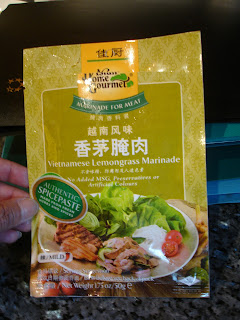You have to feel sorry for Delia Smith. For years she wrote cookbooks full of recipes which always worked. The trouble was, they were often lengthy, had a lot of steps and took quite a while to make. As a result, she sold lots of books to people with the aspiration to cook at home more often, but this was not matched in actuality. In other words, the books languished on the shelf in favour of a microwave dinner or quick call to the take away. So Delia, never being a woman to give up (as her drunken call for Norwich City supporters to get behind their team will attest), decided she needed to change tack.
The resulting 'How to Cheat at Cooking' met with a very hostile response. Some of her time saving ideas did not meet with my approval, such as the use of frozen sliced onions. I am quite capable of slicing onions and it is not such a time consuming job, but the real problem is not all vegetables lend themselves to being frozen. This can be seen when your bag of salad touches the back of a very cold fridge and goes floppy, transparent and totally unusable. Well, same happens with the sliced onions, whose structure just breaks down once frozen and then thawed.
However, some of her innovations were actually very useful for the busy person; for example the revelation that frozen seafood need not be thawed, when all you actually need to do is lengthen the cooking time slightly. Brilliant! How many times have you forgotten to take something out of the freezer to defrost before going to work (my answer: too many times than I'm willing to admit!). And who wants their kitchen smelling a little fishy from the seafood defrosting all day?
Cooking purists seem to despise most, if not all, time saving pre-prepared products. Whilst there are many which I refuse to use, there are some which save time and fuss and taste great.
The pre-prepared ingredient I am using here is a Vietnamese Lemongrass Marinade which I bought from a Chinese grocery shop. It is made by Asian Home Gourmet, whose Far Eastern products are pretty reliable (although experts may question how authentic they are), but whose Indian products I have not tried. Website: http://www.asianhomegourmet.com/. I am all for making your own spice and curry pastes, but some of the ingredients are not always readily available and the process of finely chopping and blending can be very labour intensive.
 |
| My cheat's ingredient: Lemongrass Marinade |
Serve these Summer Rolls with Nuoc Cham dipping sauce. (See http://snigskitchen.blogspot.com/2011/08/how-to-make-nuoc-cham-vietnamese.html for recipe).
Ingredients:
6-8 Banh Trang rice paper circles (I made 6 rolls, but depending on how much you put of the filling ingredients in each, you could have up to 8)
3 spring onions
6 asparagus spears, halved vertically (optional)
¼ cucumber
1 small carrot
1 small handful whole mint leaves, washed and dried
1 small handful whole coriander leaves, washed and dried
100g pho rice noodles (medium thickness rice noodles)
dash of groundnut oil (about half a tablespoon)
2 lamb steaks
1 packet Vietnamese Lemongrass Marinade
Optional: 1 small handful beansprouts
Method:
- Marinate the lamb steaks in the Lemongrass marinade mixture in a non-metallic bowl for at least 1 hour at room temperature (or for anything between 6 and 12 hours in the fridge).
- Whilst the marinating is taking place, prepare the other ingredients.
- Cook the pho noodles in boiling water, which should take about 6 minutes. If you don't want to put another pan on and can manage to keep them separate, cook the asparagus in the same pan – the cooking time is 4 minutes.
- Drain the pho noodles and cool in running cold water. Dress with the groundnut oil. This will stop the noodles sticking together. Put in a bowl and chill in the fridge. 20-30 mins should be ample.
- After taking about 3-4 fine slices of 1-2mm thickness of the carrot, either grate or slice the remaining carrot into julienne strips.
- Slice the spring onions in half lengthwise once you have removed the roots and ragged tops (leave the green parts which are firm and unspoilt, they are tasty). Slice up into quarters lengthwise.
- Partially (or completely depending on your taste) peel the cucumber. Cut into batons.
- Put all the veg and herbs onto plates in little sections to assist you with the assembly of the rolls.
- Find a nice shallow bowl or dish big enough for the Banh Trang papers. These need to be soaked in water to soften them before you can use them to wrap up the Summer Rolls.
- Now you are ready to assemble the rolls. Do them one at a time with one plate for the rolling and another for serving.
- Enjoy with some dipping sauce.

























